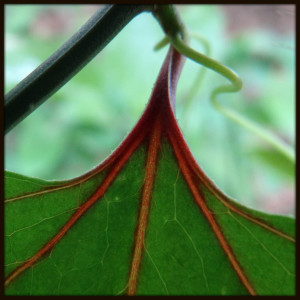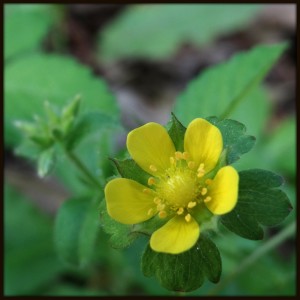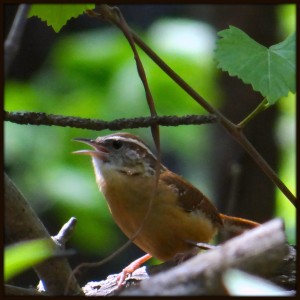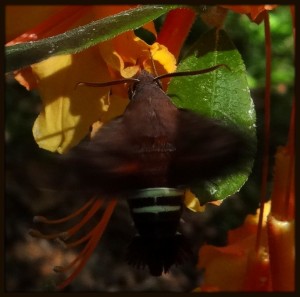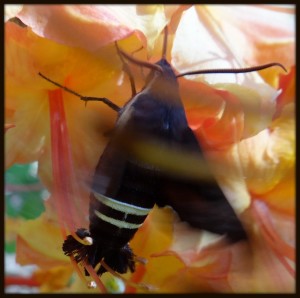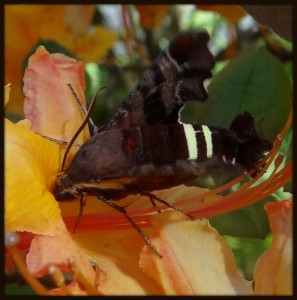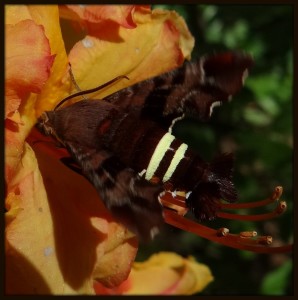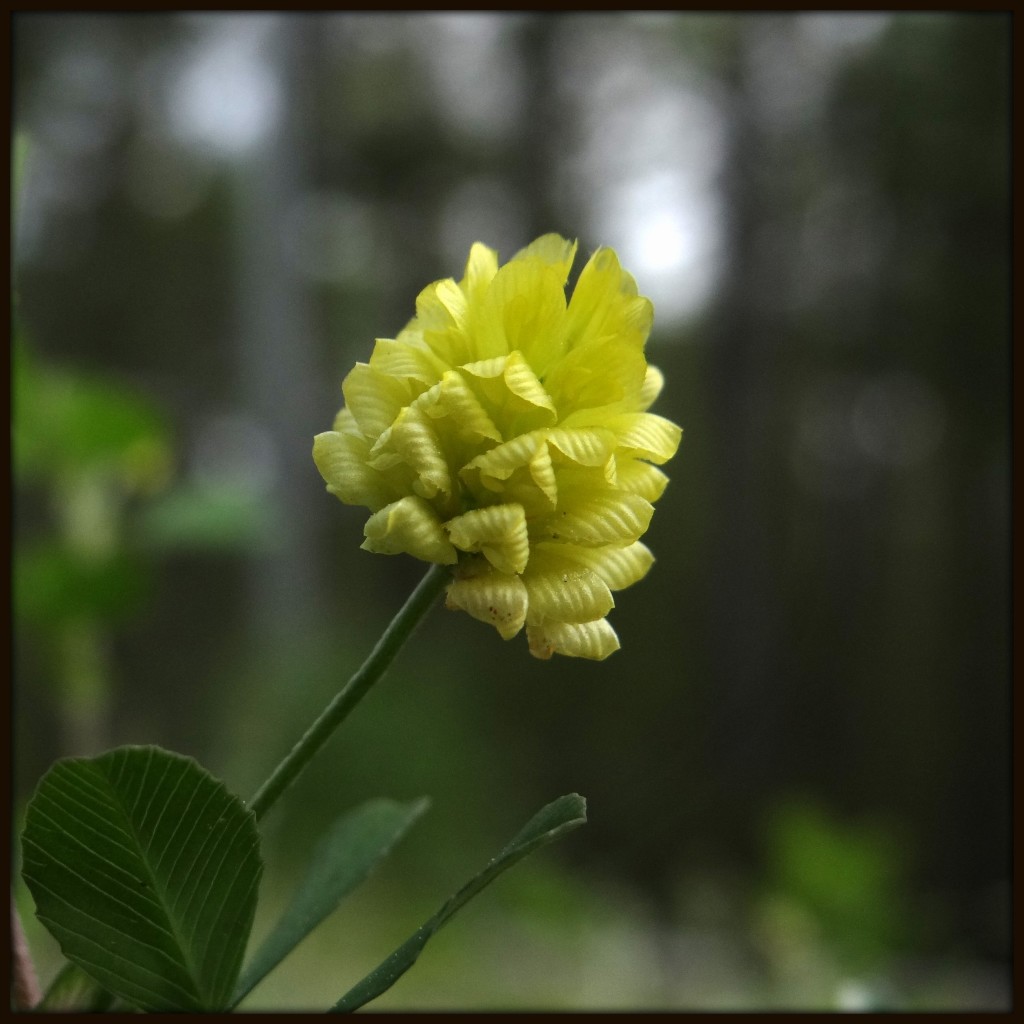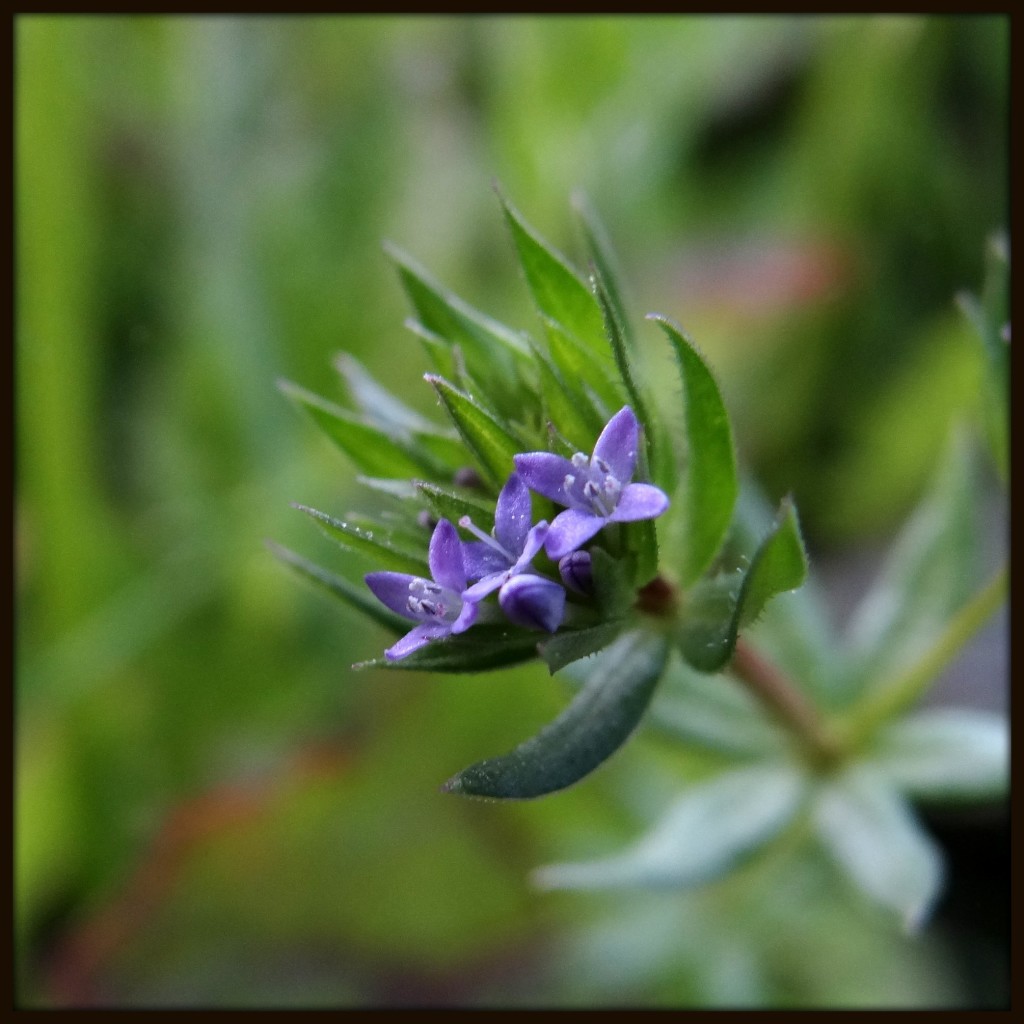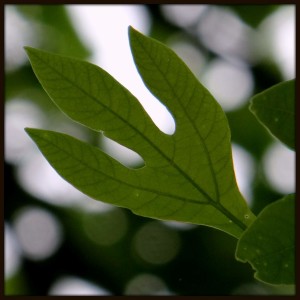 Now that all of our deciduous trees are in leaf, and roadside ditches and forest floors in the Georgia Piedmont are green with life, it is a marvelous time to take a walk and see how many different leaf shapes you can find. Many shapes are particular to a certain kind of tree, shrub, or vine; some, like that of the maple, have even been celebrated on a country’s flag. There are the three jagged leaflets of poison ivy, and five of Virginia creeper; the many lobes (rounded or jagged) of the oaks; the tulip-shaped leaves of the tulip tree tree; the five-pointed star of the sweet gum; and the heart-shaped leaves of the wild yam. Some plants cannot settle upon one leaf shape, but instead have several. Leaves of the sassafras tree can be simple ovals, shaped like mittens, or have three broad, blunt lobes.
Now that all of our deciduous trees are in leaf, and roadside ditches and forest floors in the Georgia Piedmont are green with life, it is a marvelous time to take a walk and see how many different leaf shapes you can find. Many shapes are particular to a certain kind of tree, shrub, or vine; some, like that of the maple, have even been celebrated on a country’s flag. There are the three jagged leaflets of poison ivy, and five of Virginia creeper; the many lobes (rounded or jagged) of the oaks; the tulip-shaped leaves of the tulip tree tree; the five-pointed star of the sweet gum; and the heart-shaped leaves of the wild yam. Some plants cannot settle upon one leaf shape, but instead have several. Leaves of the sassafras tree can be simple ovals, shaped like mittens, or have three broad, blunt lobes.
It is one of those wonders of the natural world that there is such diversity in the shapes of leaves. As one website on leaf shapes remarks, “Plants have leaves in many different shapes – the thicker the book you refer to, the more leaf shapes they seem to find.” The various classifications and permutations of shape form an arcane language, limited to a handful of botanists and elementary Montessori school students: terms such as runcinate, trifoliate, cordate, digitate, and deltoid. Although the words may be unfamilar, they describe the shapes of leaves encountered all around us: dandelion, clover, morning glory, maple, cottonwood. Beyond terms for general shape are further classifications for leaf form: toothed or untoothed, simple or compound, entire or lobed. Finally, even though one set of terms might be used to classify a leaf from a particular species of plant, some plants, particularly oaks, have leaves that vary considerably while keeping to generally the same overall shape.
Why? Why is there such diversity in leaves? What makes one leaf angular and another rounded, one leaf wide and another narrow? These are the kinds of questions wondering children might ask, after being satisfied with a general explanation for the color of the sky and the forces causing the wind to blow. And, like most questions children generate, the answer is not an easy one. Indeed, there is no one clear explanation out there. Only a few days ago, a physics blog reported a new theoretical model that purports to explain all leaf shape variation as an incidental effect of the different patterns of veins in the leaf.
Some aspects of leaf shape have been explained based upon comparing tropical forest plants with temperate forest ones, such as those here in Georgia. A visit to a tropical rainforest, or a greenhouse full of tropical plants, will reveal that most tropical leaves are thicker than temperate ones, as well as more rounded and smooth-edged (untoothed). Tropical plants retain their leaves for years, while deciduous plants in Georgia forests all keep their leaves only for one season. As a result, tropical leaves are sturdier than temperate forest ones, and therefore thicker. Thinner leaves require less energy to produce, and are more effective at gas exchange needed for photosynthesis. However, there is a cost of having thinner leaves: they are not as sturdy, particularly in areas distant from the major leaf veins (which provide structural support for the leaf). So those distant areas are simply done away with, resulting in lobed leaves like those of the white oak. The lobes (or teeth) of many leaves of Georgia plants also help to reduce wind resistance (and the damage that could result from it). Also, botanists have noticed that lobed or toothed leaves can permit sunlight to reach leaves beneath them, so perhaps the indentations help the plants filter sunlight down to leaves on their lower branches or stems.
Ultimately, we simply do not know why there are so many leaf shapes are out there, and how (if at all) a star-shaped leaf might better serve a sweet gum tree’s needs than the compound structure of ovate leaflets of a hickory. It is humbling and perhaps even a bit comforting, though, that something so commonplace as the forms that leaves take has managed to remain so mysterious for so long a time.
This article was originally published on May 8, 2010. The original photo has been replaced with a recent one I took, of a sassafras leaf.
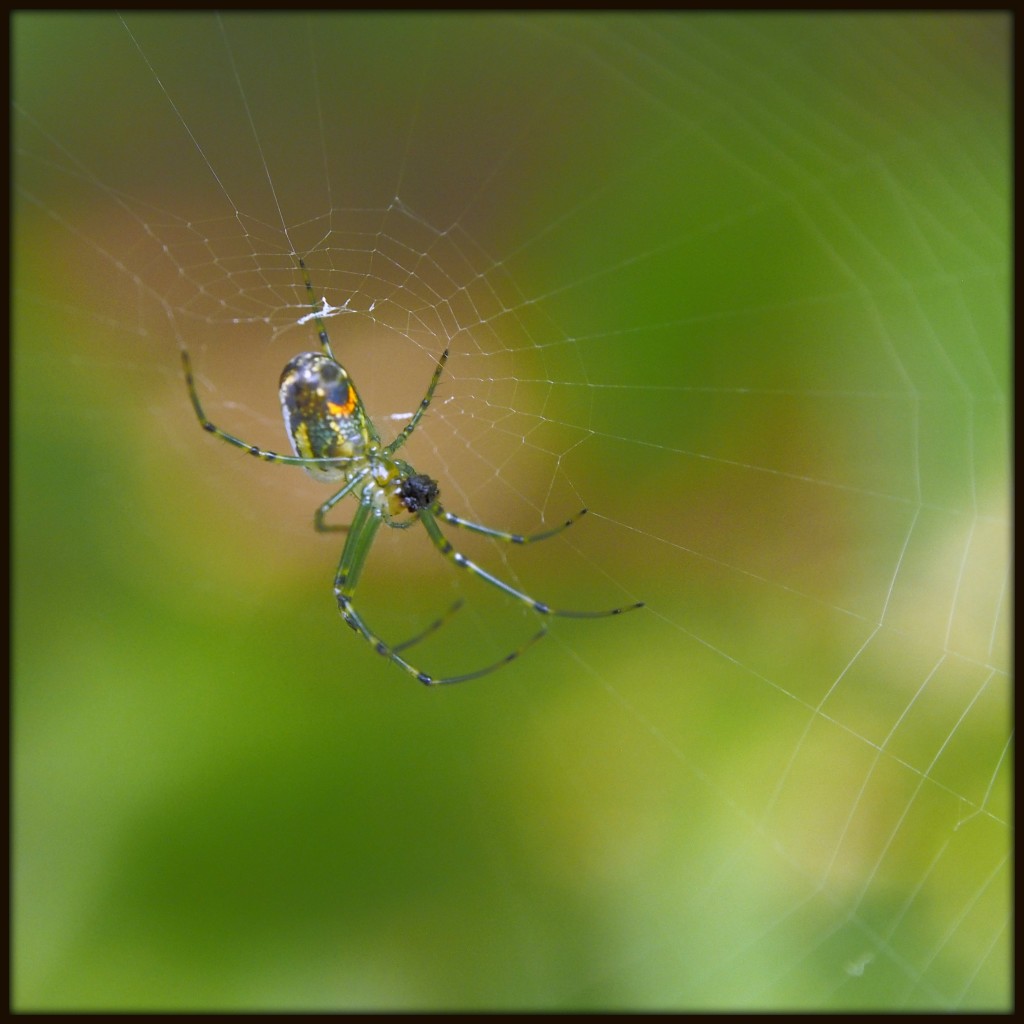

.JPG)




 Now that all of our deciduous trees are in leaf, and roadside ditches and forest floors in the Georgia Piedmont are green with life, it is a marvelous time to take a walk and see how many different leaf shapes you can find. Many shapes are particular to a certain kind of tree, shrub, or vine; some, like that of the maple, have even been celebrated on a country’s flag. There are the three jagged leaflets of poison ivy, and five of Virginia creeper; the many lobes (rounded or jagged) of the oaks; the tulip-shaped leaves of the tulip tree tree; the five-pointed star of the sweet gum; and the heart-shaped leaves of the wild yam. Some plants cannot settle upon one leaf shape, but instead have several. Leaves of the sassafras tree can be simple ovals, shaped like mittens, or have three broad, blunt lobes.
Now that all of our deciduous trees are in leaf, and roadside ditches and forest floors in the Georgia Piedmont are green with life, it is a marvelous time to take a walk and see how many different leaf shapes you can find. Many shapes are particular to a certain kind of tree, shrub, or vine; some, like that of the maple, have even been celebrated on a country’s flag. There are the three jagged leaflets of poison ivy, and five of Virginia creeper; the many lobes (rounded or jagged) of the oaks; the tulip-shaped leaves of the tulip tree tree; the five-pointed star of the sweet gum; and the heart-shaped leaves of the wild yam. Some plants cannot settle upon one leaf shape, but instead have several. Leaves of the sassafras tree can be simple ovals, shaped like mittens, or have three broad, blunt lobes.